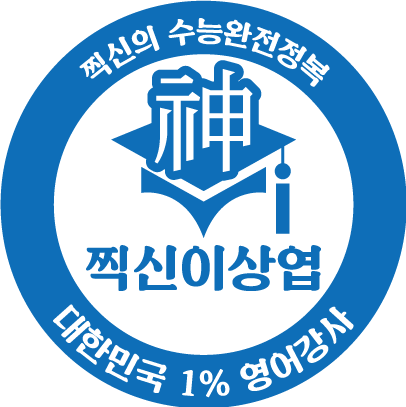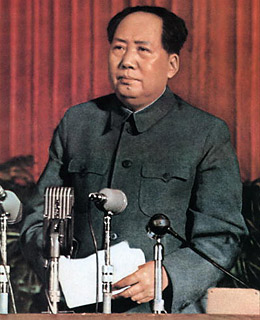모택동의 인민복
찍신의 수능완전정복(006)-글의 제목
다음 글의 제목으로 가장 적절한 것은?
He was the founding father of the People’s Republic of China. His figure is largely symbolic in China. During the Cultural Revolution, his glorified image resulted in a personality cult that influenced every aspect of Chinese life. So most people believed that Mao Zedong would lead a fashion trend too. During his 30-year rule as China’s Chairman, Mao regularly appeared in a proletarian four-pocket jacket, known in the West as the Mao suit. After the establishment of the People’s Republic of China in 1949, the suit became widely worn by males and government leaders as a symbol of proletarian unity and an Eastern counterpart to the Western business suit. But after Mao’s death in 1976, it began to go out of fashion. Almost without exception, today’s Chinese leaders wear Western business suits.
① China’s Fashion Trend
② Communist’s Particular
Fashion: a Four-Pocket Jacket
③ Communist’s Old-Fashioned Suit
④ One of the Best-Dressed China Leaders
⑤ The Cultural Revolution in China’s History
정답 및 해석
[해석] 그는 중화 인민 공화국의 창시자였다. 그의 모습은 대체로 중국에서 상징적이다. 문화 혁명 동안에, 그의 미화된 이미지 때문에 개인 숭배가 일어나서 중국인 생활의 모든 면에 영향을 주었다. 따라서 대부분 사람들은 마오쩌둥[모택동]이 패션 유행을 또한 이끌었다고 믿고 있다. 중국의 의장으로서 30년 통치 동안, 마오쩌둥은 자주 노동자 신분의 4개의 주머니가 달린 재킷, 서양에는 마오쩌둥의 옷으로 알려진 것을 입고 나타났다. 1949년 중화 인민 공화국이 설립된 이후, 그 옷은 남성들과 정부 지도자들이 즐겨 입는 옷이 되었고 노동자 계급의 통합의 상징이면서도 서양의 정장에 상응하는 동양의 옷이었다. 그러나 1976년 마오쩌둥의 사후, 그 옷은 구식이 되었다. 거의 예외 없이, 오늘날의 중국 지도자들은 서양의 정장을 입는다.
[어휘] founding father 창시자 / Cultural Revolution 중국의 문화 대혁명(1966-1971) / glorified a. 미화시킨 glorify v. 미화하다 / personality cult 개인 숭배 / rule 통치, 지배 / proletarian 프롤레타리아[노동자] 계급의 / counterpart 상대, 대응 관계에 있는 사람[것] / business suit 신사복 / go out of fashion 구식이 되다, 유행하지 않게 되다
[정답] ②







